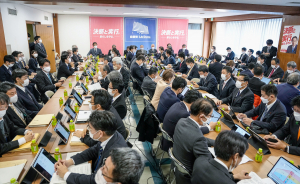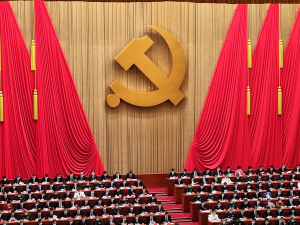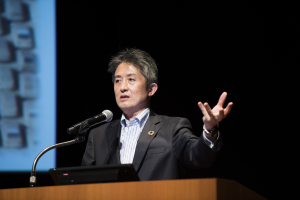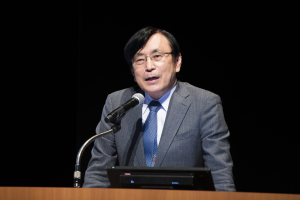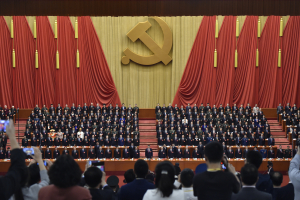
Making the New Capitalism a Reality: Hints from Britain’s Third Way
January 17, 2022
R-2021-011E
Prime Minister Kishida’s “new capitalism” remains a highly amorphous concept. In our ever-growing digital economy, priority should be given to policies that provide security without sacrificing economic dynamism, emulating the example of Britain’s Third Way.
* * *
Prime Minister Fumio Kishida has touted a “new capitalism” as the basic vision driving economic policy in his fledgling administration. Citing growing inequality, Kishida has argued for a shift from the “growth first,” industry-friendly policies of neoliberalism to a more interventionist approach emphasizing redistribution.
Certainly, an overarching philosophy is needed to chart a coherent economic course, and the “new capitalism” slogan has undeniable appeal to a deeply frustrated nation. Thus far, however, it is difficult to see any concrete signs of such a course shift in the Kishida government’s policies, with there being little that is “new” in the expansionary economic stimulus package approved by the cabinet on November 19.
The notion of forging a more inclusive and people-centered brand of capitalism recalls the Third Way embraced by Britain in the late 1990s under Prime Minister Tony Blair, after 18 years of neoliberal policies. In the following, I will explore some key elements of Blair’s policies and their relevance to Japan as it struggles to chart a way forward.
Thatcherism and Its Fallout
Margaret Thatcher’s Conservative Party swept to power in 1979 on a pledge to reverse Britain’s economic and social decline. Calling for a return to individual responsibility, Thatcher took aim at big government, promoting privatization and deregulation, while cracking down on organized labor and slashing funding for education and social programs. Thatcher’s neoliberal reforms (including the financial “Big Bang”) were widely credited with revitalizing the British economy in the mid-1980s. At the same time, they dealt a blow to Britain’s heavy industries, contributing to high unemployment, and shook the foundations of the nation’s healthcare and education systems.
Thatcher’s policies continued under Prime Minister John Major, but by 1997, it was no longer possible to ignore the adverse side-effects of neoliberalism, including growing inequality, entrenched poverty, and social exclusion. Mounting public dissatisfaction with the status quo opened the way for a resounding electoral victory by a transfigured Labour Party under its brilliant young leader, Tony Blair.
The old Labour Party had vigorously pursued big-government policies, including the nationalization of heavy industry and utilities and the construction of a comprehensive and generous social safety net. Inefficiencies had permeated every sector of industry, sapping Britain of its economic and social vitality. Under the banner of New Labour, Blair called for a Third Way that sought to preserve the economic efficiencies of capitalism while expanding government investment in such public services as healthcare and—first and foremost—education. The policies pursued under this “Anglo-social” model proved beneficial and garnered widespread popular support.
There are many parallels between Britain in the late 1990s and today’s Japan as it gropes toward a “new capitalism” that avoids both the pitfalls of neoliberalism and the perils of the welfare state. Perhaps Tony Blair’s Third Way offers some hints on a way forward for the Japanese economy in the post-pandemic era.
Incentivizing Work and Building Human Capital
One of the core elements of Blair’s Third Way was its embrace of active labor-market policies oriented to formation of human capital through vocational education and training. Blair’s “welfare to work” reforms shifted the emphasis from doling out benefits to providing the unemployed with the skills, opportunities, and incentives to find new work, thereby encouraging the efficient reallocation of human resources while improving the quality of the labor force. The idea was to make unemployment assistance a kind of trampoline that returned people to the labor force armed with new skills, rather than a net that trapped the unemployed in a cycle of dependence, social exclusion, and poverty. With their emphasis on self-reliance and social inclusion, Blair’s welfare reforms (sometimes referred to as “workfare”) had a global impact and profoundly influenced the policies of US President Bill Clinton.
A successful welfare-to-work program combines vocational training with incentives to work. In practice, this involves (1) requiring the unemployed to participate in job training and actively search for work in order to receive benefits, and (2) a minimum wage and a working (or earned income) tax credit to “make work pay.”
Japan has a relatively low level of unemployment, but it suffers from growing income inequality, and it desperately needs to raise labor productivity in order to boost wages, which have remained stagnant for the past three decades. To address these issues, the government needs to encourage labor mobility while building human capital by investing substantially in programs combining vocational training with income support for job seekers.
Economic Security in the Gig Economy
The number of Japanese gig workers and freelancers has exploded in response to the rise of the digital economy and the adoption of labor reforms designed to encourage such alternative work styles. Unfortunately, Japan’s safety nets were not designed with such workers in mind, and the government has been extremely slow to address that deficiency. A recently released draft agenda for deliberation of the next growth strategy action plan—to be adopted in June 2022—includes several topics under the heading of “creating an environment conducive to work styles that do not depend on [regular] employment.” But there is no direct mention of the need for a safety net that covers freelancers, gig workers, and other nontraditional workers. That should be a top priority for policymakers.
Under Japan’s current tax and social security system, gig workers (such as Uber Eats couriers) who rely on platformers for their livelihood are treated not as employed persons but as independent contractors (and thus self-employed). From a safety-net standpoint, the difference is critical. In Japan, all employers must provide their employees, free of charge, with Workers’ Accident Compensation Insurance, which guarantees medical compensation, lost wages, and other benefits to any employee suffering a work-related illness or injury. However, with very few exceptions (such as construction workers enrolled under a special program), independent contractors are ineligible for Workers’ Accident Compensation Insurance.
Employers also pay half of the premiums for Employment Insurance, which guarantees an allowance to employees who lose their jobs or have their hours cut back. Those categorized as self-employed receive no such compensation, on the assumption that they are responsible for drumming up their own business and setting their own hours. In reality, most gig workers are subject to the supervision and control of a hiring entity, just like payroll employees. Yet they are treated very differently under Japan’s labor laws, tax code, and social security system.
The inequities of Japan’s social security system are particularly egregious. The system continues to draw a sharp distinction between employed persons and the self-employed, and between regular and nonregular employees, despite the rise of work styles that blur or erase those distinctions. The result is a mismatch that has allowed large numbers of people to slip through the cracks. But instead of undertaking the needed structural reforms, the government has responded with quick fixes, offering election-year handouts to mollify anxious voters.
It is time to shift to a sustainable work-style-neutral social security system. This will involve full digitalization of taxpayer data using the My Number taxpayer identification system in order to calculate income, taxes, and benefits. It will also mean building a secure system whereby platformers like Uber Eats can upload income data directly to the My Number portals of freelancers and gig workers. Such systemic reform may be a challenge, but the payoff will be a labor force with confidence in the future.
Expanding Support for Job Seekers
Another key component of reform should be the overhaul and expansion of Japan’s jobseeker support system to make human capital formation the center of our employment policies.
The current program’s origins go back to the 2008–09 recession triggered by the US subprime mortgage crisis. In late 2008, a massive tent city sprang up in central Tokyo, calling attention to the plight of tens of thousands of jobless workers with no access to unemployment compensation. Their ranks included so-called “dispatched workers” (a rapidly growing portion of the labor force) as well as laid-off payroll employees whose benefits had expired. In April 2009, in response to the crisis, the government established the Emergency Human Resource Development and Employment Support Fund to provide vocational training, livelihood assistance, and reemployment support to such workers. This emergency program grew into today’s jobseeker support system.
Under the jobseeker support system, those who are out of work but are ineligible for Employment Insurance can receive a stipend of ¥100,000 per month while receiving free vocational training and job-placement support (primarily through the Hello Work employment service), providing that they pass a rigorous means test. The government characterizes this program as the nation’s second-tier safety net, intended to bridge the gap between Employment Insurance (first tier) and Livelihood Protection (third tier). While targeted mainly at the jobless—including first-time job seekers, freelancers, and workers who have used up their Employment Insurance benefits—it is theoretically open to working people as well, provided they pass the means test.
Unfortunately, that test is extremely restrictive, drastically limiting the scope of the program. The system, which has been widely criticized for this and other failings, should be revamped along the lines of the British model. It should be expanded to provide reskilling opportunities for a wide range of employees and self-employed persons, and it should be accompanied by a working (or earned income) tax credit (see below), which jobseekers can use to supplement their incomes while they are in training.
Toward an Earned Income Tax Credit
One of the key achievements of the Blair administration was the introduction of the Working Tax Credit, a refundable tax credit designed to ensure that the annual income of anyone working full-time, even at minimum wage, would fall above the poverty line. When paired with the welfare-to-work program, the WTC helped support human capital formation by giving workers the financial leeway to enroll in career education or vocational training in order to better their circumstances.
The origins of the WTC can be traced to the “negative income tax” championed in the early 1960s by American economist Milton Friedman. The basic idea is that those earning above a certain threshold should pay income tax commensurate with their earnings, while those whose income falls beneath that cutoff should receive a tax credit proportionate to the shortfall as a way of distributing economic risk among taxpayers.
Time to Modernize Taxation and Social Security
Fair and efficient administration of an earned income tax credit or similar system requires a mechanism for calculating taxes and benefits on the basis of timely and accurate information about taxpayers’ income from all sources. That can only be accomplished through integrated, digitized tax and social security administration linked to a full-scale taxpayer identification system. Unfortunately, Japan lags behind other industrial countries in the development of e-government and the mandatory use of taxpayer ID numbers. Hopefully, this will change, as a government working group is currently hammering out recommendations for the creation of a “digital safety net” making use of the My Number ID system.
In her book Utsukushiku, tsuyoku, seicho suru kuni e (Toward a Beautiful, Strong, Growing Country), Liberal Democratic Party politician Sanae Takaichi, currently chair of the ruling party’s Policy Research Council, throws her support behind a Japanese version of the working tax credit as one tool for reducing economic inequality, arguing that it saves on the administrative costs of social security by making use of the existing tax administration system. She notes that the idea was first floated under the cabinet of Prime Minister Taro Aso (2008–09) but was ruled out on the grounds that tax administrators had no means of accurately assessing each individual’s total income.
“With the introduction of the My Number system in 2016,” she writes, “we have acquired the tools to ensure accurate assessment of personal income, and once bank account information is linked to taxpayers’ My Number accounts, that will facilitate prompt payment.”
Prime Minister Kishida’s “new capitalism” remains a highly amorphous concept, lacking in clarity and specificity. In our ever-growing digital economy, the new capitalism should provide a safety net for gig workers and other nontraditional labor through policies that provide security without sacrificing economic dynamism, emulating the example of Britain’s Third Way.










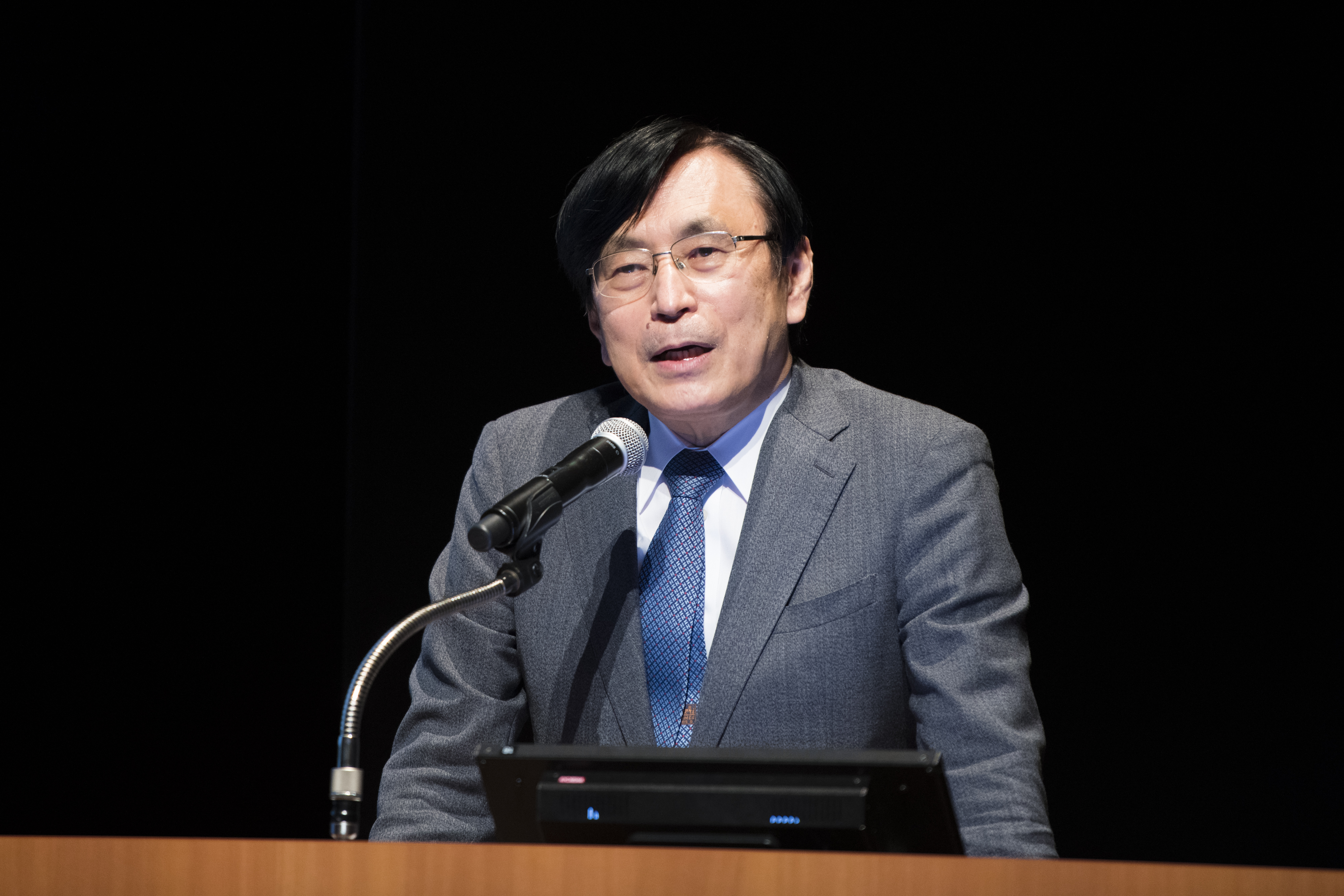












![[Policy Research] Water Minfra: A New Strategy for Water-Centric Social Infrastructure](/files_thumbnail/research_2023_Oki_PG_Mizuminhura_png_w300px_h180px.png)





















